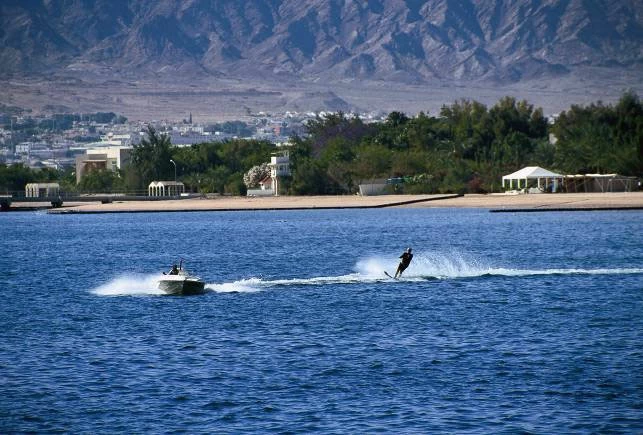Aqaba
Jordan’s only seaport lies half encircled by mountains at the head of the Gulf of Aqaba, an arm of the Red Sea. Its position was always strategic – as a hub of the land and sea routes linking Arabia, the Far East, Africa and Europe, and for its subterranean reserves of sweet water. It remains a busy port, and Jordan’s fastest developing town.
The earliest known settlement in the area (Chalcolithic, c. 3500 sc) had furnaces for the smelting of copper from Wadi Araba. But as yet there is no clear location for Solomon’s port of Ezion-geber near Eloth on the shore of the Red Sea, in the land of Edom’ (I Ki. 9:26). It was once identified with Tell al-Khaleifeh, near the Israeli border, but the earliest finds there may be from 200 years later.
The Nabataeans founded the city of Aila within the area of present-day Aqaba, and developed it into an important trade base on the route between the Mediterranean coast and south Arabia, India and China. After the Roman annexation of AD 106 Ada’s role was enhanced as the southern terminus of the new road from Bostra, the Via Nova Traiana.






